The battle for the wired connector for smartphones is over and USB-C is the way forward. This multifunctional port can do just about everything: it can charge devices, transfer data, manage audio and video output, and even connect accessories.
How did we get here? Well, for years now the European Union has been trying to convince electronics manufacturers to settle on a common standard to avoid the mess (and waste) that proprietary connectors create. At first microUSB was the connector of choice, but with the arrival of USB Type C, or USB-C for short, the industry moved to the new standard.
And thanks to some EU regulations due to take effect in late 2024, USB-C is mandatory for virtually all portable electronic devices (with some exceptions for smaller devices like smartwatches).
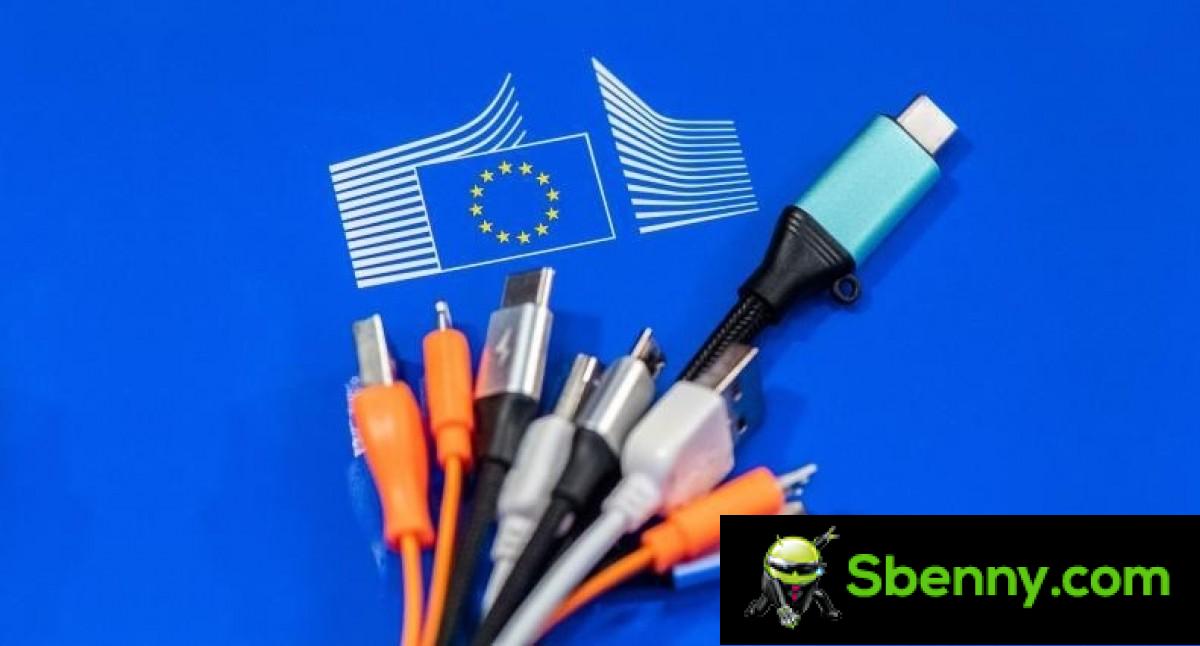
Most smartphone makers readily embraced USB-C, just as they had done with microUSB before. The only major holdout is Apple, which still uses Lightning on its iPhones, AirPods, and EarPods — everything else has switched to USB-C, including the remote control for the new Apple TV.
We think Apple’s range is a good example of why USB-C is so good. Lighting is essentially a USB 2.0 port. This means slow data transfers when syncing files between an iPhone and a computer or when moving RAW photos from a memory card to an iPad.
Did you know that there is actually a Lightning-based card reader that runs at USB 3.0 speeds? So faster transfers are possible, but apparently that’s a difficult feat to achieve, and only the iPad Pros support it. And even then Apple has never released a video card that can exceed 1080p.
Lightning is also limited in the amount of energy it can carry. The iPhone charger tops out at 30W, while Apple’s USB-C charger for the new MacBooks can deliver 140W. Ok, that’s not quite standard, but it’s also not the maximum that USB-C can deliver.
Let’s try to keep things organized and analyze the main functions of USB-C one by one.
Data
USB was born as a data port. USB 1.0 and 1.1 are slow and barely remembered now, USB 2.0 is still very much alive. USB-C has a total of 24 pins, 12 on each side (well, 22 pins, but let’s not get bogged down in the details). Right in the middle is a single D+/D- pair, which is the data connection of the typical USB 2.0 cable and is mandatory for USB-C. This ensures that all cables have at least some connectivity.

The pinout of a USB Type-C cable
USB 3 added extra pairs of cables for data transfer: there are four extra pairs in a USB-C plug. While USB 2 is limited to 480Mbps, the additional cabling of a USB-C cable allows for transfer speeds of 10, 20, 40, and even 80GBps.
A quick note: the USB-C connector is used by USB, of course, but also by Thunderbolt. This distinction is set to disappear as USB 4 is based on Thunderbolt 3 and the new version 2 of USB 4 is based on Thunderbolt 4.
Another interesting application is carrying PCI-Express signals – this is basically a wired version of the PCIe slots on a computer motherboard. This allowed external GPUs to be connected to laptops using a single cable.
video
Another popular use of USB-C is video out. DisplayPort is probably the most common use, and USB-C has largely replaced the big old DP port. More importantly, it’s not data OR video, it’s data AND video AND power.
This allows a single device to connect to a hub that adds a standard HDMI port, multiple USB Type-A and Type-C ports, perhaps a card reader, audio and microphone jacks, etc. These hubs are built into some monitors, allowing you to launch a full desktop experience by plugging in a single cable.
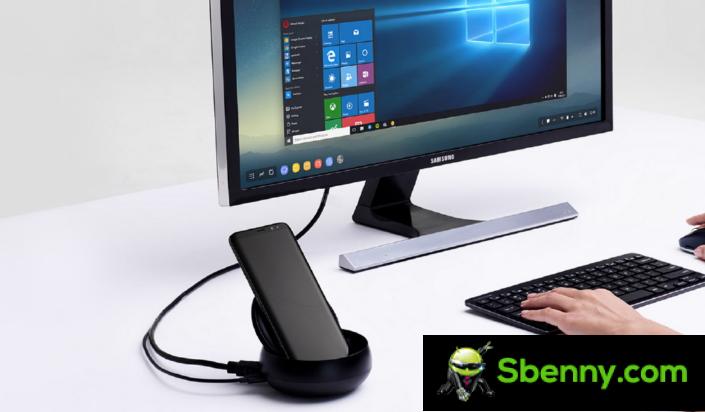
This is quite useful for laptops, of course, but several smartphone manufacturers offer desktop modes: Samsung’s DeX, Motorola’s Ready For, even Huawei has one. Apple has one too, Stage Manager for iPad Pro (which uses USB-C, of course).
There are other options besides DisplayPort, MHL and HDMI adapters are also available. Some of these are active adapters that convert from one standard to another, but there are also simple passive adapters.
Audio
We’ll mention audio quickly here. The USB can power an external DAC that you can connect headphones to. However, as with video, there is also a passive option: Audio Adapter Accessory mode.
USB-C has a lot of pins to work with, and some of these can be remapped to the wiring needed for a typical TRRS jack, so a simple passive adapter can connect a headset with a microphone. Note that this is a purely analog mode and the digital circuits are disconnected to avoid noise.
Power
The basic USB standard has fairly low power limits (500mAh for USB 2.0), although most manufacturers don’t follow the standard to the letter, so 10W adapters are pretty common.
Obviously, manufacturers want their products to stand out, and fast charging is one way to do that, especially now that smartphone batteries have capacities ranging from 3-6,000mAh. This has led to many proprietary solutions such as Qualcomm’s Quick Charge and Oppo’s VOOC.
The standard method, however, is USB Power Delivery (USB-PD for short). The initial release prescribed different voltages and current levels that could be supported: 2A at 5V, plus 3A or 5A at 12V or 20V. This gave Power Delivery quite a wide range from 10W to 100W.
However, these fixed voltages require DC to DC conversion within the phone to reduce them to something better suited to the lithium battery inside. USB-PD Revision 2 introduced a couple more voltages – 9V and 15V – but that wasn’t enough.
Revision 3 allows devices to communicate with their chargers and request a specific voltage. It can vary from as low as 3.3V to as high as 21V and can be set precisely in 20mV increments. Chargers that support it are marked as a “programmable power supply”. This way the charger is the one dealing with the extra heat, not the phone (lithium batteries don’t like it when things get hot).
| Appearance | Fixed source | Programmable power source |
| Constant voltage mode | 5V 9v 15V 20V |
5V Prog (3.3V to 5.9V) 9V Prog (3.3V to 11.0V) program 15V (3.3V to 16.0V) program 20V (3.3V to 21.0V) |
| Current | Round (PDP/Voltage) to the nearest 10mA | RoundDown (PDP/Prog Voltage) to the nearest 50mA |
| Step size | Nobody | Nominal 20 mV |
| Current limit mode | Nobody | Yes, nominal 50mA steps |
| Periodic RDOs during operation | No – it doesn’t apply | Yes, required for PPS to work |
| Requires robust door design | Yup | Yup |
The latest Extended Power Range USB-PD standard adds more fixed voltages: 28V, 36V and 48V. This made the new maximum of 240W of power (48V at 5A), which is sufficient even for rugged laptops (although phones are already close to the 240W limit). There is also a new adjustable voltage power option, which allows the device to gradually adjust the voltage between 15V and 48V in 100mV steps.
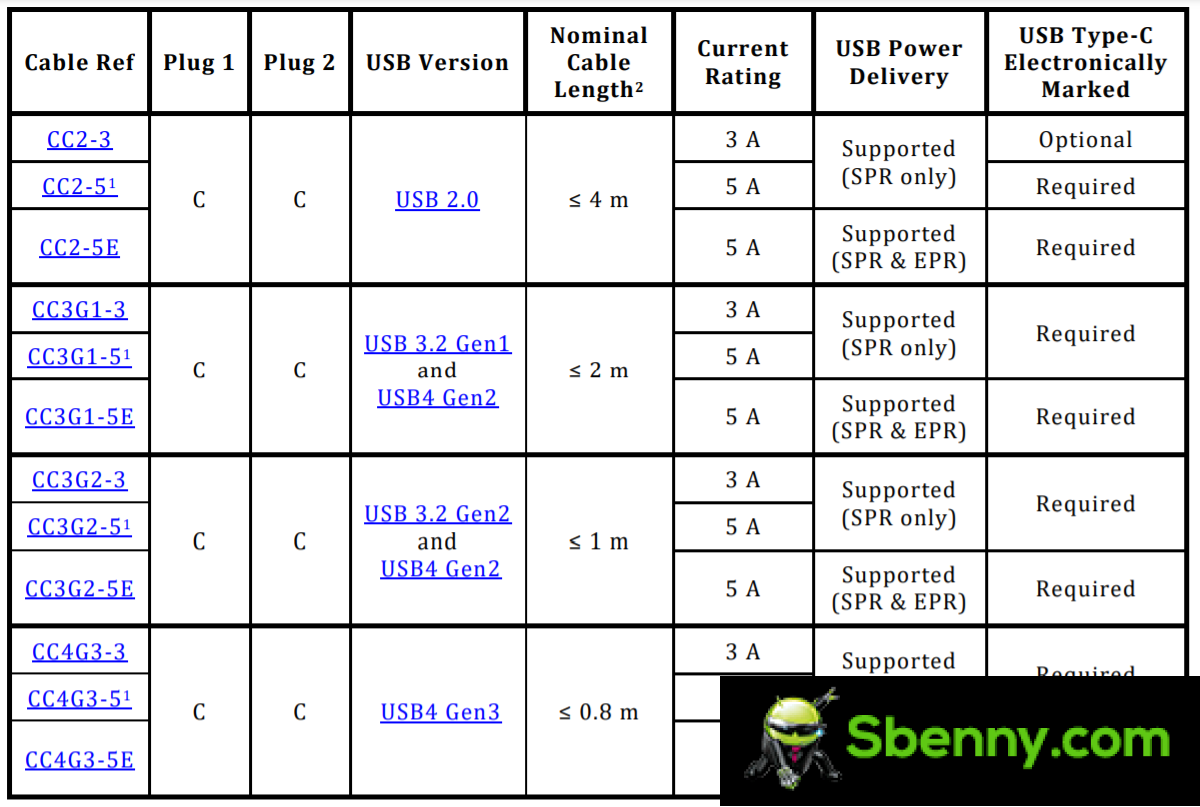
Note that for security reasons such powerful cables require a chip called an “e-marker”. This chip signals to the charger and phone (or laptop or whatever) that the cable is capable of carrying the extra power.
Some criticism
As much as we love USB-C, we can’t pretend it’s perfect. Our only major gripe is that while it has so many capabilities, not all devices and not all cables support everything. Many of the features we mentioned above are optional.
The worst part is that it can be very difficult to figure out which devices and which cables support what. The USB-IF is trying to fix things with new labels that clearly indicate how much data and power a given cable can carry.
This should also fix our other complaint, the naming scheme has become an absolute monster. Did you know that USB 3.0 no longer exists? It was renamed USB 3.1 Gen 1. But that doesn’t exist anymore either, now it’s USB 3.2 Gen 1.
Things got even more complicated with titles like USB 3.2 Gen 2×2. Ugh. Thankfully, all of that will be replaced with much clearer labels: USB 5Gbps, USB 10Gbps, USB 20Gbps, and USB 40Gbps (and, presumably, USB 80Gbps soon). Much better.

As for power, there will be two levels: USB 60W and USB 240W. There will not be a 100W label as apparently the difference between 100W cables and 240W cables is small enough that when the new labels come into play, it will no longer make sense to sell 100W cables.

Conclusion
USB-C has been great — we use it to charge our phones, laptops, headphones, razors, flashlights, and pretty much anything else that has a battery inside and fits in a backpack.
It has allowed us to create comfortable workplaces on our desks with monitors, keyboards, mice, etc. all brought to life by plugging in a single cable. And considering that the latest standards allow it to carry many times more data and power than the original specifications, USB-C probably isn’t done evolving yet.
Will there ever be a USB-D? Maybe, but not anytime soon. Will the world drop the wires and go wireless? Probably not – it’s not an efficient way to upload. It’s not great for data either, 2.4GHz Wi-Fi is already painfully congested in apartment buildings, and 5GHz is also getting pretty crowded, which prompted the Wi-Fi Alliance to move to the 6GHz band.
For the foreseeable future USB-C is the one cable to rule them all.

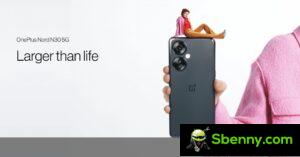
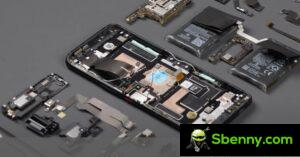




Start a new Thread